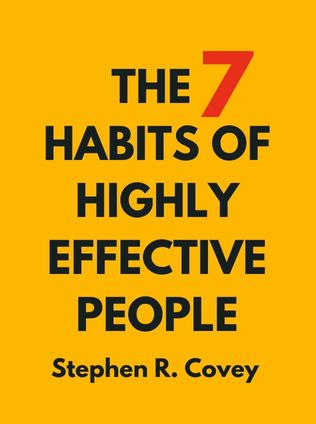
Braiding Sweetgrass
Indigenous Wisdom, Scientific Knowledge and the Teachings of Plants
By Robin Wall Kimmerer
Published 10/2013
About the Author
Robin Wall Kimmerer is a member of the Citizen Potawatomi Nation, a botanist, and a professor of Environmental and Forest Biology at the State University of New York (SUNY) College of Environmental Science and Forestry. Her unique background as an Indigenous scientist gives her a distinctive voice that blends traditional ecological knowledge with Western scientific principles. In 2013, she published Braiding Sweetgrass: Indigenous Wisdom, Scientific Knowledge, and the Teachings of Plants, a book that has since become a beacon for those seeking to reconnect with nature and understand the deep interconnections between all living beings. Her work in education and outreach has earned her numerous accolades, including a MacArthur Fellowship in 2022.
Kimmerer’s writing is deeply informed by her cultural heritage, and she draws on her experiences as both a scientist and an Indigenous woman to advocate for a harmonious relationship with the natural world. Her teachings encourage a shift from a mindset of exploitation and domination to one of reciprocity and respect, recognizing the gifts that nature continually offers and our responsibility to return those gifts with care and gratitude.
Main Idea
In Braiding Sweetgrass, Robin Wall Kimmerer weaves together three distinct but interconnected strands of knowledge: Indigenous wisdom, scientific knowledge, and the lessons plants teach us. Through this metaphorical braid, she invites readers to reconsider their relationship with the environment, urging us to see the natural world not as a resource to be exploited but as a community of living beings with whom we share a reciprocal relationship.
The central idea of the book is that by embracing a worldview rooted in mutual care, we can heal the rift between humans and the natural world. Kimmerer advocates for a return to practices that honor the Earth, emphasizing the importance of gratitude, stewardship, and reciprocity in our interactions with nature. By learning from the wisdom of Indigenous cultures and the teachings of plants, we can create a more sustainable and just world for all beings.
Table of Contents
- Introduction: The Three Strands of the Braid
- Part 1: Planting Sweetgrass
- Part 2: Tending Sweetgrass
- Part 3: Picking Sweetgrass
- Part 4: Braiding Sweetgrass
- Part 5: Burning Sweetgrass
Introduction: The Three Strands of the Braid
Kimmerer begins by introducing the metaphor of the braid, explaining that the three strands represent Indigenous knowledge, scientific understanding, and the lessons plants offer. She reflects on the sacredness of sweetgrass in her Potawatomi culture, where it is used in ceremonies and symbolizes healing and harmony. By braiding together these strands of knowledge, Kimmerer offers a holistic approach to understanding the world, one that acknowledges the interconnectedness of all life.
"Braiding Sweetgrass is about the weaving together of different ways of knowing and being, about how we can learn to live in harmony with the Earth and each other." – Robin Wall Kimmerer
Part 1: Planting Sweetgrass
Honoring the Gifts of Nature
In the first part of the book, Kimmerer explores the concept of nature as a giver of gifts. She emphasizes the importance of recognizing and honoring these gifts, rather than taking them for granted. The idea of gratitude is central to this section, as Kimmerer encourages readers to see the abundance around them and to express thanks for the gifts that the Earth provides.
For example, Kimmerer describes how plants like sweetgrass offer their gifts freely, asking nothing in return. Yet, in Indigenous cultures, there is an understanding that these gifts come with responsibilities. To take from the Earth without giving back is to upset the balance of nature. Kimmerer contrasts this with the Western worldview, which often sees nature as a commodity to be exploited for human gain.
- The reciprocity of gift-giving: In Indigenous cultures, when you receive a gift from nature, you are expected to give something back, whether it’s through a physical offering or through stewardship and care.
- The power of gratitude: By practicing gratitude, we cultivate a mindset of abundance rather than scarcity, fostering a deeper connection to the natural world.
Kimmerer’s reflections in this section serve as a powerful reminder that the Earth’s resources are not infinite and that we have a responsibility to protect and preserve them for future generations.
The Honorable Harvest
One of the most compelling concepts Kimmerer introduces in this section is the "Honorable Harvest," a set of guidelines for harvesting plants and other natural resources in a way that is respectful and sustainable. The Honorable Harvest is based on the principles of taking only what you need, using everything you take, and giving back to the Earth.
Sign up for FREE and get access to 1,400+ books summaries.
You May Also Like
The Subtle Art of Not Giving a F*ck
A Counterintuitive Approach to Living a Good Life
By Mark MansonRich Dad Poor Dad
What the Rich Teach Their Kids About Money - That the Poor and Middle Class Do Not!
By Robert T. KiyosakiHow To Win Friends and Influence People
The All-Time Classic Manual Of People Skills
By Dale Carnegie



















